Combat ships. Cruisers. Deadly rivers flowed into the ocean
The most interesting thing about this project is that the Japanese were not going to build such ships. According to the armament program, the Japanese fleet had to replenish 6 light cruisers with a displacement of 3 tons (in fact, a modified Tenryu) and 500 scout scouts larger, 3 tons.
But "intelligence reported for sure" that the project of the cruiser "Omaha" is ready in the USA (the following material will be about it), and everything had to be redone. The Omaha seemed like a perfect ship and demanded an immediate response.
So the scout project was generally postponed, and instead of a cruiser of 3 tons, they urgently developed a project for a new universal light cruiser with a displacement of 500 tons. The tasks of the new ship included leading destroyers, reconnaissance, fighting raiders on trade routes, and raiding.
The project was based on the same Tenryu.
There was simply nothing else at the disposal of the designers. But since the Tenryu was a very successful ship, without hesitation, they simply changed the hull of the cruiser, making it one deck higher and longer. This was required primarily in order to accommodate a more powerful and modern power plant, the speed of the cruiser was planned to be 36 knots in order to keep up with the leading destroyers.
According to the plan, everything in the cruiser should be more: guns, torpedo tubes, speed, range, armor.
Reservation
As usual with the Japanese, the armor came out rather weak. But since the opponents in the plans drew enemy destroyers, then at the headquarters fleet decided that the protection should hold 120-mm projectiles at a distance of 7 km and beyond.
The armor belt was. Thickness 73 mm, length from bow boiler room to aft engine room, height 4,88 m.
The compartments with the main mechanisms were covered from above by an armored deck 28,6 mm thick. Above the artillery cellars, the deck was 44,6 mm thick.
The conning tower in the bow superstructure had a reservation of up to 51 mm, which was actually very progressive for Japanese ships.
The ammunition supply elevators were protected by 16 mm armor, and the cellars had 32 mm protection. The main caliber guns had 20 mm shields.
The total weight of the armor was only 3,5% of the displacement, which at that time was very, very little.
Power plant
For new cruisers, designed for new tasks, more powerful TZA were developed. It was a very successful experiment in triple cooperation between the well-known company Parsons, the Japanese naval technical department Gihon and the Mitsubishi concern. These TZA developed power up to 22 hp. and received the name Mitsubishi-Parsons-Gihon.
Each ship in the series was equipped with four such TZA.
Steam for the turbines was produced by twelve Kampon RO GO three-drum water tube boilers. Six large and four small boilers were powered by oil, while the other two small boilers were on mixed fuel.
The total design power of the power plants was 90 hp, the ship was driven by 000 three-blade propellers with a diameter of 4 m. The cruisers developed the required speed of 3,353 knots without any problems.
The cruising range was 1 miles at 000 knots, 23 miles at 5 knots, and 000 miles at 14 knots. Fuel reserves: 8 tons of oil, 500 tons of coal.
Crew
The crew of the cruiser consisted of about 450 people, including 37 officers. The officers' cabins were located in the aft part of the ship on the lower deck, behind the engine rooms, there were 10,69 square meters per officer. m. area of living quarters.
The lower ranks were in the bow of the ship above the boiler rooms, on the upper deck, and in the forecastle. One sailor had only 1,56 sq. m. area.
Living conditions by European standards would be considered unsatisfactory. There was a lot of noise and heat from the power plant. In tropical latitudes - not the best neighborhood. In addition, the creators saved on lighting and ventilation, making them natural with the help of portholes.
I.e. And the lighting of the living quarters, and even more so the ventilation was very poor.
weaponry
The main caliber consisted of seven 140-mm guns in single-gun turret mountings.
Two guns at the bow and three at the stern. Two guns were installed on the sides of the bow superstructure. That is, six guns could give the maximum salvo per side.
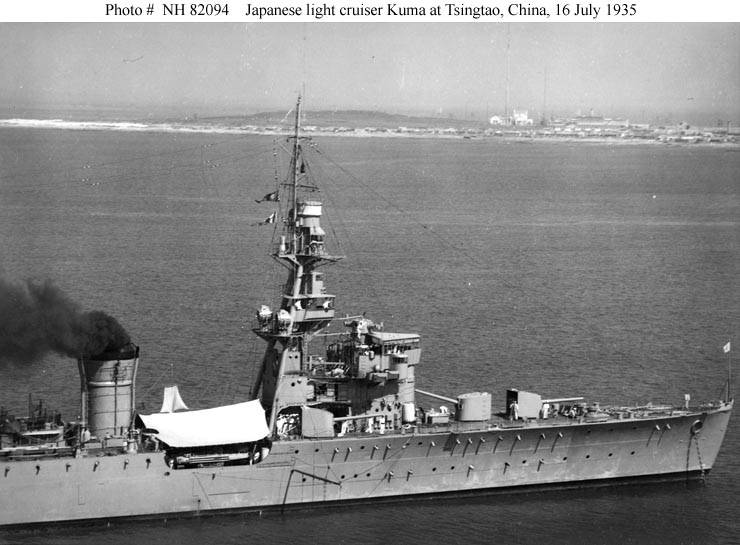
The guns could not be considered modern, the guidance was carried out manually, the loading was manual, the rate of fire entirely depended on the work of the calculations. Shells and charges from the cellars were also fed manually, using chain hoists. So the rate of fire was about 6 rounds per minute. The projectile's flight range at a maximum elevation angle (25 degrees) reached 17,5 km.
Auxiliary and anti-aircraft weapons
First, there are two 80 mm 8 cm / 40 3rd Year Type guns in single open mounts. Also not automated guns with manual guidance, their rate of fire was 13-20 rounds / min, the maximum firing range at an elevation angle of 45 ° was 10,8 km, the maximum height of the projectile was achieved at an elevation angle of 75 ° and was 7,2 km.
Secondly, two 6,5 mm 6.5 mm / 115 3rd Year Type Kiho assault rifles. It was a licensed copy of the Hotchkiss 1900 model.
In general, the cruiser's anti-aircraft armament could not even be called satisfactory.
Mine torpedo armament
Each cruiser carried four twin rotary 533 mm torpedo tubes. The devices were located in front of and behind the chimneys. That is, the cruiser could fire four torpedoes from each side.
Ammunition consisted of 16 torpedoes.
Additionally, the ship could take on board 48 mines Mk.6 Model.1.
Aircraft Armament
Aviation these cruisers were not carried, with the exception of the cruiser "Kiso", on which, for the sake of experiment, a short (only 9 meters long) platform was installed for launching aircraft. The platform was installed on the roof of the bow tower of the GK # 2, later an additional platform was added to the roof of the tower # 1. According to the plan, the plane was supposed to take off from the platform using only its engine and the flow of oncoming air from the ship at full speed. A hangar in the bow superstructure was equipped for seaplanes.
Upgrades
Unfortunately, complete data on the upgrades of the Kuma-class cruisers have not been preserved due to the loss of some of the documents from the fire during the bombing of the Allied aviation.
The anti-aircraft armament of the cruisers was enhanced with 25-mm anti-aircraft guns. "Kuma" received a total of 36 barrels of 25-mm caliber.
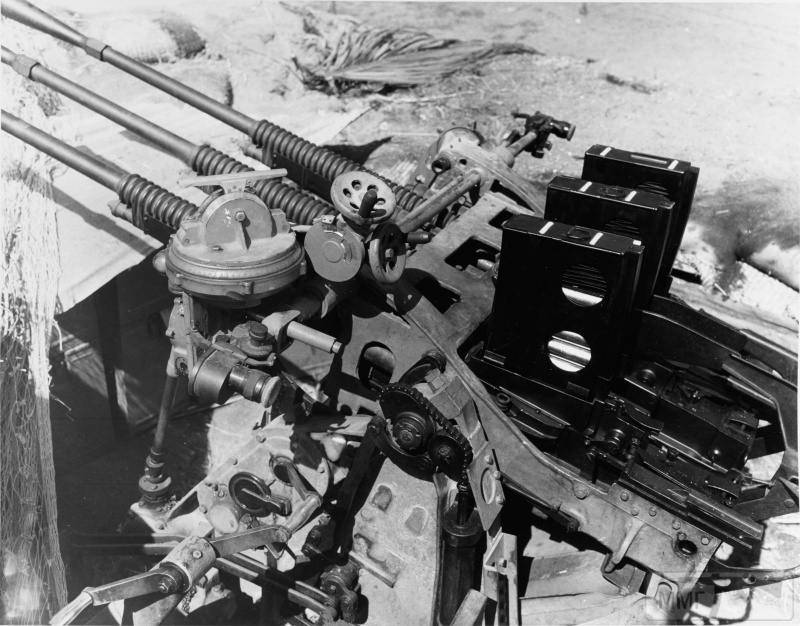
Two cruisers, Ooi and Kitakami, underwent modernization in 1940 and 1941, respectively, during which ten four-tube 610-mm torpedo tubes were installed on each ship. The ships turned into torpedo cruisers.
The idea was to attack enemy ships at night with volleys of 20 610 mm torpedoes, plus some more destroyers could release. But it was no use, the Americans stubbornly did not want to fight at night, and the appearance of radars in massive numbers on the ships of the US Navy nullified the tactics of a secretive approach followed by the launch of torpedoes.
And experiments with the Kitaks did not end, it was rebuilt into a carrier of eight Kaiten man-torpedoes.
Combat application.
"Kuma"
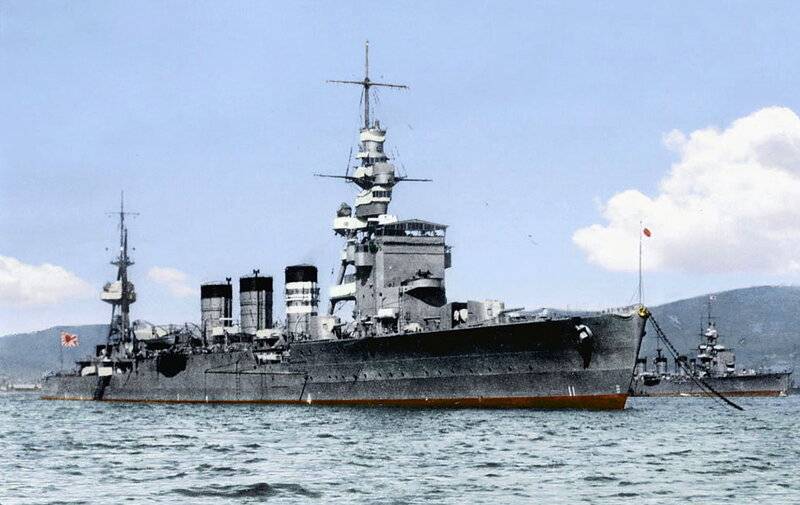
At the beginning of World War II, he was a member of the 16th squadron. He took part in the invasion of the Philippines, and then landed troops in western Mindanao and Cebu. In the island's waters off Cebu, the cruiser miraculously dodged two torpedoes fired by an American torpedo boat.
Then the cruiser "Kuma" covered the landing in Corregidor, patrolled the area of Manila, guarded the harbor of Makassar. It was used to transport troops.
The last voyage as a transport "Kuma" made in the first week of January 1944, the cruiser left Singapore for Penang together with the heavy cruisers "Ashigara" and "Aoba".
Not far from Penang, the Kuma was torpedoed by the British submarine Tally Ho, which hit the cruiser with two torpedoes. "Kuma" sank very quickly.
"Tama"
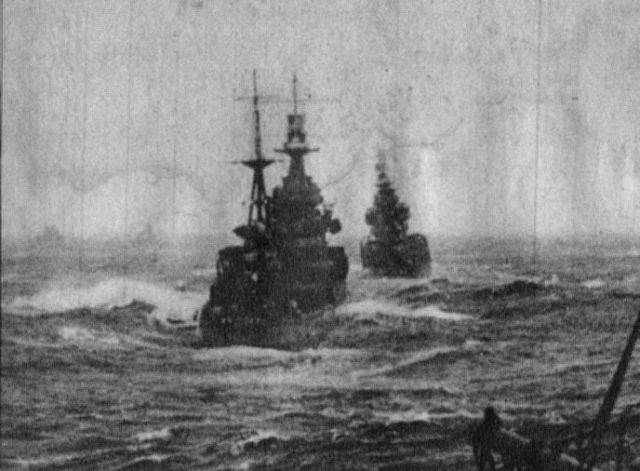
The cruiser began service in tandem with the sister ship "Kiso" in the 21st Squadron of the 5th Fleet. He took part in the operation on the Aleutian Islands, took part in the Battle of the Commander Islands. Further, it was used as an armed transport during the evacuation of the garrison of Kyska Island, to deliver reinforcements to the islands of the southwestern Pacific Ocean.
Received serious damage from American aircraft at Cape St. George, was repaired until the end of 1943. After the renovation, it again became a fast transport, supplied the garrisons on the islands.
Participated in the Battle of Leyte, in the Battle of Cape Engano. Received a torpedo from an American plane, dropped out of the battle, the crew fought for survivability. After resuscitation, the crew was able to give a move and the ship crawled to Okinawa. And on the way to Okinawa "Tamu" was met by the American submarine "Jallao". Naturally, the Americans did not miss the cruiser, crawling at a speed of 7 knots.
"Tama", having received two more torpedoes, instantly took in a huge amount of water, turned over and sank with the entire crew. There were no rescued.
"Kiso"
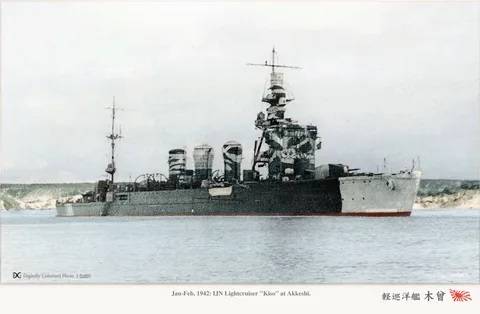
Together with "Tama" took part in the battle at the Commander Islands in the Aleutian operation. The garrison of the island of Kiska was evacuated. He worked in the Southwest Pacific. It was thoroughly damaged in September 1943 by American bombers and was repaired until March 1944.
Participated in the Battle of Leyte Gulf. Then he transported goods in the Philippine Sea.
The last sailing took place on November 13, 1944. The Kiso was leaving the port of Manila when American planes arrived and the cruiser received several 227 kg bombs in the immediate vicinity and sat down in shallow water, where it stayed until 1956, after which it was cut into metal.
"Ooi"
The war began in the Indian Ocean, guarding the battleships of the 9th squadron. He participated in all operations in the Philippines, after which he was converted into a high-speed transport and carried out supplies from Singapore.
During the cruise on July 19, 1944, near Manila, it was torpedoed by the American submarine Flasher. Two torpedoes blew off the bow and caused a massive fire. The ship was abandoned by the crew and sank.
Kitakami
Probably the most long-suffering cruiser of the Kuma family. Not a single ship of this and subsequent series has undergone so many alterations.
In 1941, the Kitakami was converted into a torpedo cruiser. Partially, since the rearmament plan consisted of replacing 140-mm guns with 4 × 2 127-mm guns, 4 × 2 25-mm anti-aircraft guns and 11 (five on each side and one in the center plane) quad 610-mm torpedo tubes.
But in Japan, problems with armament began, and the four forward 140-mm guns were abandoned. They installed 10 torpedo tubes, not 11, five on board. Plus, they installed 2 twin mounts of 25-mm anti-aircraft guns.
Since the idea of "torpedo cruisers" did not succeed, at the end of 1942 they decided to convert the cruiser into a fast transport.
The number of 25-mm anti-aircraft guns increased to 18 barrels, bomb releasers and an ammunition load of 18 bombs appeared at the stern. The number of torpedo tubes was reduced to two four-tube ones, and six Daihatsu landing craft were placed in the vacant space.
The presence of anti-submarine weapons did not help, and on January 27, 1944, a torpedo from the British submarine Teplar hit the side of the Kitakami.
The cruiser "Kinu" towed the "Kitakami" to Singapore, where the ship underwent emergency repairs. The Kitakami then accompanied the transport convoys to Manila and then left for Sasebo. There the cruiser was again converted, this time into a carrier of the Kaiten man-torpedoes. Eight devices were placed on sponsons and launched along the stern slip. They were lifted onto the ship with a 20-ton mast crane.
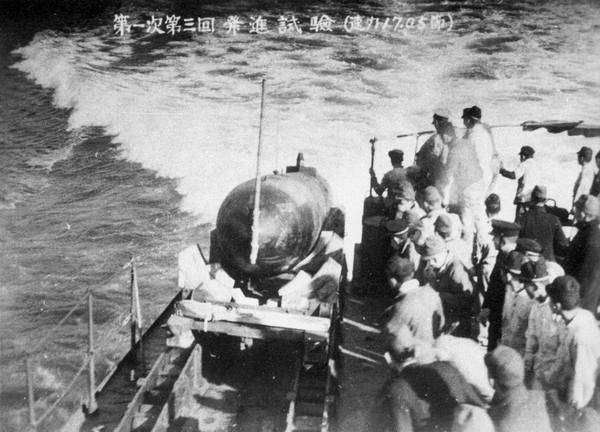
The remaining 610 mm torpedo tubes and 140 mm guns were removed. Instead of 140 mm guns, they installed 2 twin mounts of 127 mm universal guns. The number of 25 mm assault rifles increased to 67 barrels (12 × 3 and 21 × 1).
But the planned suicide operation on the Kaitens in Okinawa did not take place. On July 24, 1945, Kitakami was heavily damaged in Kure by American carrier-based aircraft, and on July 28, 1945, during another raid, it was actually finished off. Naturally, they did not repair the cruiser, and in 1947 they were scrapped.
The second series of cruisers were ships of the "Nagara" type
The series also consisted of five ships, "Nagara", "Isuzu", "Yura", "Natori", "Kinu" and "Abukuma". Differences from the ships of the first series were minimal and consisted in individual details. There is absolutely no point in considering them, since the visor on the chimney is a difference that cannot really be called significant.
The only difference between Nagara and Kuma was torpedo tubes, since they were originally 610 mm on Nagara.
It is worth noting only the successful conversion of Isuzu into an air defense cruiser. The 140-mm guns were removed, and instead of them, six 127-mm universal guns were installed in three twin mounts and 37 anti-aircraft guns of 25 mm caliber.
"Nagara"
With the outbreak of the war, "Nagara" secured the invasion of the Philippines, after which he left for Dutch India. There he transported troops to Kendari and Makassar. Then he was transferred to Batavia and served as a guard ship.
He fought at Midway and in the Battle of the Solomon Islands, participated in the Battle of Guadalcanal. He was involved as a fast transport in supply operations.
On August 7, 1944, returning from a campaign to Okinawa, the Nagara was hit by a torpedo from the American submarine Crocker. The crew could not cope with the damage and the cruiser sank.
"Isuzu"
Carried out the transportation and escort of ships in the waters of Surabaya, Balkapanan and Makassar from the beginning of the war until September 1942. He took part in the shelling of Guadalcanal, on the night of November 13-14 in the Guadalcanal region he was hit by American aircraft and was badly damaged by bombs.
After repairs, which lasted until May 1943, strengthening the air defense and receiving a radar to control the airspace, he began transport operations.
On December 5, 1943, near the Kwajalein Atoll, he was again hit by an American bomb, but was able to return to Truk and further to Japan. There the ship was converted into an air defense cruiser.
He fought at Cape Engano, rescued people from sunken aircraft carriers, was damaged by shells from American cruisers.
Then he carried out transport operations, during one of which he received a torpedo from the Hake submarine in the bow. Crawled to Singapore, where it was repaired, but on the very first exit on April 7, 1945, in the Bay of Bima, he ran into American submarines Charr and Jibilen, which literally tore the cruiser with their torpedoes.
"Natori"
Took part in the invasion of the Philippines. He took part in a battle in the Sound Strait, where, together with other ships, he sank the American cruiser Houston and the Australian cruiser Perth.
Patrolled the coast of Sarabain and Makassar.
On January 9, 1943, she received two torpedoes fired by the American submarine Teutog, but since the torpedoes hit the stern and the crew coped with the damage, the Natori reached Singapore, where it was repaired until 1944. The damage was very serious.
After leaving the repair, I went to Manila with army supplies. On August 18, 1944, on one of these cruises, two torpedoes from the American submarine Harhead sent the Natori to the bottom.
"Yura"
From the beginning of the war, he operated in the region of Malaya, Borneo and French Indochina. Participated in the Battle of Midway, the Battle of the Solomon Islands, escorted transports to Guadalcanal.
On October 18, 1942, off the coast of Choisal Island, the cruiser received a torpedo from the American submarine "Gramius", but the crew coped with it and brought the ship to the base.
However, a week later, on October 25, 1942, shelling the American base "Henderson Field", received two bombs from a dive bomber. The ship began to withdraw, but the V-17s, which had taken off from the airfield, inflicted very heavy damage on the Yura. The ship lost its speed and was finished off by torpedoes from the approaching Japanese destroyers.
The Jura was the first Japanese light cruiser to be sunk in World War II.
"Kinu"
Participated in the capture of Java and Malaya, operations in Dutch India. Throughout 1942 and 1943, the cruiser sailed by high-speed transport, providing all the necessary army garrisons in the regions of Singapore. Java and Makassar. At the Makassar anchorage, the cruiser was damaged by a bomb dropped from a B-24 bomber. The renovation lasted until September 1943.
After the renovation, he continued supplying activities. Towed the torpedoed cruiser Kitakami on 27.01.1944/1944/XNUMX to the base in Singapore, delivered cargo to the Philippines. In October XNUMX, she towed the damaged cruiser Aoba to Cavite.
On October 25 he landed troops on Leyte Island, and on October 26 he was sunk by bombers from the aircraft carrier Manila Bay near Palau.
"Abukuma"
Took part in the campaign to Pearl Harbor. Participated in the landing of troops in Rabaul and Kavieng. Participant in the operation on the Aleutian Islands. Together with the light cruiser Kiso, the garrison of Kiska Island was evacuated in July 1943.
During a campaign to support the garrisons of the Panaon Islands in the Philippines, Abukuma was torpedoed by the American RT-137 torpedo boat. One torpedo hit and not in the critical area of the engine room. The cruiser remained afloat and kept running. "Abukuma" went in the direction of its bases, but in the Sulu Sea on October 26, 1944, B-24 caught up with it and sold it with bombs in full. Two bombs exploded on the deck, a fire started, but the bombs that exploded near the sides brought more damage. As a result, the cruiser was abandoned by the crew and sank.
Sendai-class cruisers
The third series of cruisers, the Sendai class, consisted of only three ships. Three more ships were not built due to restrictions imposed by the Washington Treaty, which Japan signed in 1921.
The cruisers differed from the previous series of cruisers of the Nagara class in a different arrangement of boilers and in the presence of catapults for aircraft. The Sendai, Dzintsu and Naka were built.
Sendai
Escorted the invasion forces to Malaya in November 1941. The transports landed troops, and the warships fired at the positions of the British forces in Malaya.
December 20, 1941 "Sendai" took part in the sinking of the Dutch submarine O-20.
On January 26, 1942, the Sendai and 4 destroyers took part in the Battle of Endau against British destroyers. As a result, the Japanese sank the destroyer Thanet.
Further, the cruiser participated in the capture of Milush Atoll, landed troops on Guadalcanal, and shelled Tulagi Island. In the night battle at Guadalcanal, she was covered by the battle cruiser Kirishima, but he still sank.
Then the Sendai was based on Rabaul and was engaged in transport operations until its death on November 2, 1943.
It happened in the battle in the Gulf of Princess Augusta, where the Sendai was a board to the detachment of American cruisers Montpellier, Cleveland, Columbia and Denver. The Americans fired extremely accurately, and simply tore the Sendai apart with their shells. The cruiser sank.
"Take that"
Participated in the invasion of the Philippines, in the landing at Luzon. In January 1942, the cruiser escorted transports with the invasion forces to Balikpapan. The Dutch submarine K-XVIII fired torpedoes at the cruiser. While the cruiser and the destroyers were driving the submarine, four American destroyers approached the convoy and sank three transports and a minesweeper boat.
Further "Naka" took part in operations to capture the island of Java, took part in the battle in the Java Sea. Provided troops on Christmas Island.
During the landing, the Naka was hit by a torpedo fired by the American submarine Seawulf. The explosion made a huge hole, but the team dealt with the damage and the Natori towed the Naka to Singapore. The repair of the cruiser took almost a year.
After repairs, on April 1, 1943, the cruiser "Naka" moved to Truk, from where it carried out transportation. On February 17, 1944, the ship left Truk with the task of providing assistance to the damaged cruiser Agano, but then three waves of American aircraft flew up.
The cruiser fought off the first two raids, and in the third, luck turned away from the Japanese. First, the Americans hit the "Nack" with a torpedo, depriving it of its course, after which it became easier than ever to hit the immobilized cruiser with bombs. The Naka eventually rolled over and sank.
"Dzintsu"
Participated in the capture of the Philippines, covered landing operations in Celebes, Hong Kong, Ambon and Timor. During the battle in the Java Sea, the cruiser was hit by a 120-mm shell fired by the British destroyer Elektra. The damage required repair.
Participated in the Battle of Midway, covered the landing on Guadalcanal. During the fighting for Guadalcanal, he was hit by a 227 kg bomb from an American bomber. The ship returned to Truk, where it was patched up and sent to Japan for major repairs.
On July 8, 1943, "Dzintsu" left Truk together with the destroyers of the cover as a transport. The cruiser transported troops to land on the island of Kolombangara. On July 12, an American seaplane sighted the Japanese flotilla and brought a detachment of US ships into the convoy. The Japanese were attacked by American cruisers.
The Jintsu was the first to open fire, but the American St. Louis and Honolulu and the New Zealand Linder fired more accurately and more often. More than a dozen 203-mm shells hit the Dzintsu, but a torpedo from an American destroyer put the final point.
What can you say about these cruisers? By the beginning of the Second World War, they were outdated, both morally and physically. The main problem was the size, which made it impossible to equip the ships in accordance with the changing conditions. This applied to both radar equipment and modern guns and anti-aircraft installations.
However, the ships had good speed and carrying capacity, which made it possible to use them as fast and (importantly) well-armed transports capable of repelling enemy ships.
An obvious problem for ships of all three series was anti-torpedo protection. 8 cruisers of the dead 12 became victims of torpedoes.
Old ships, built immediately after the First World War, turned out to be quite useful to the Japanese fleet, not so much in terms of firepower, but because of their other qualities. For battle, these cruisers were the least suitable.
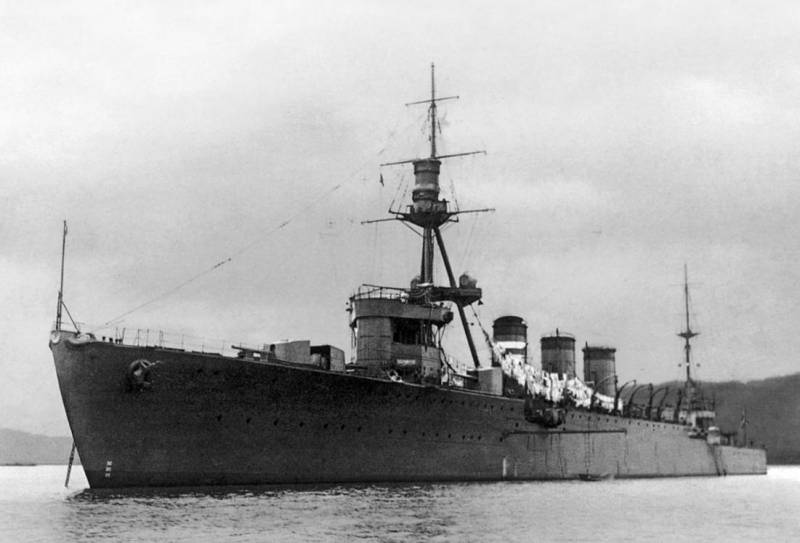
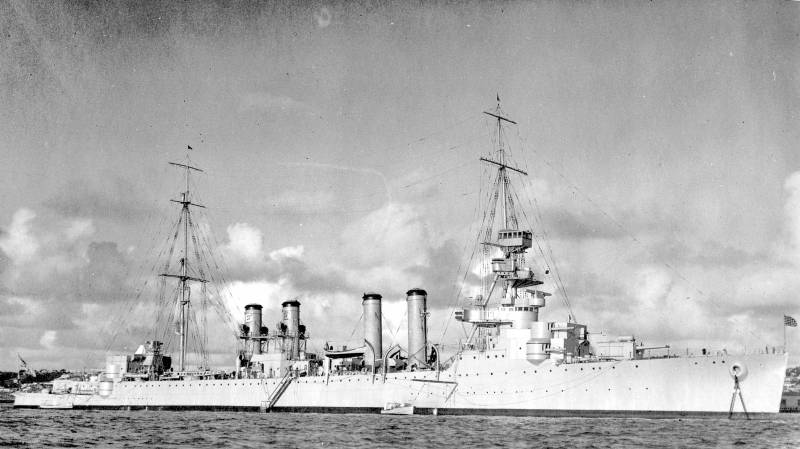
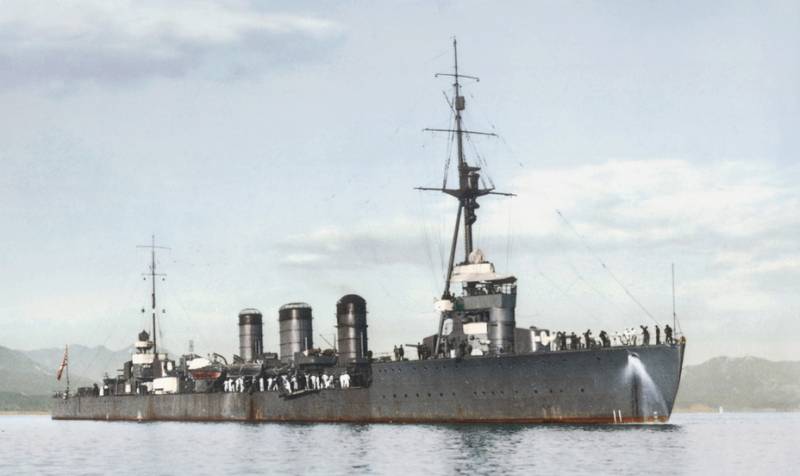
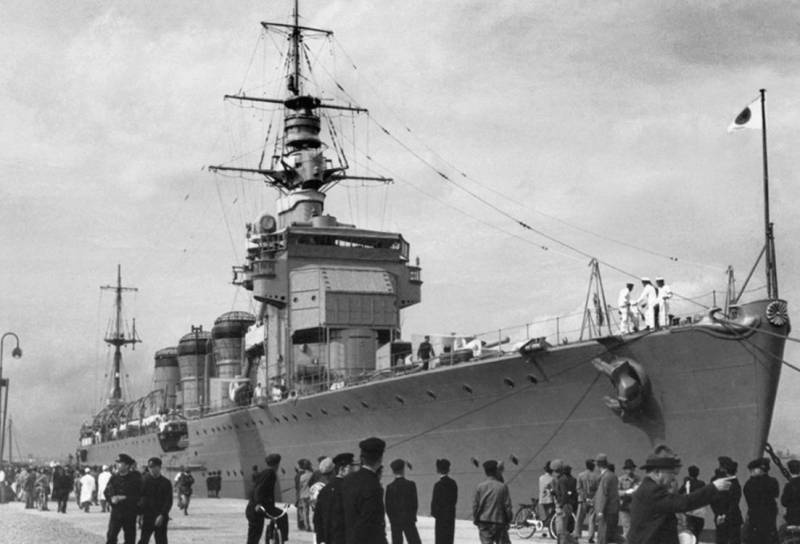
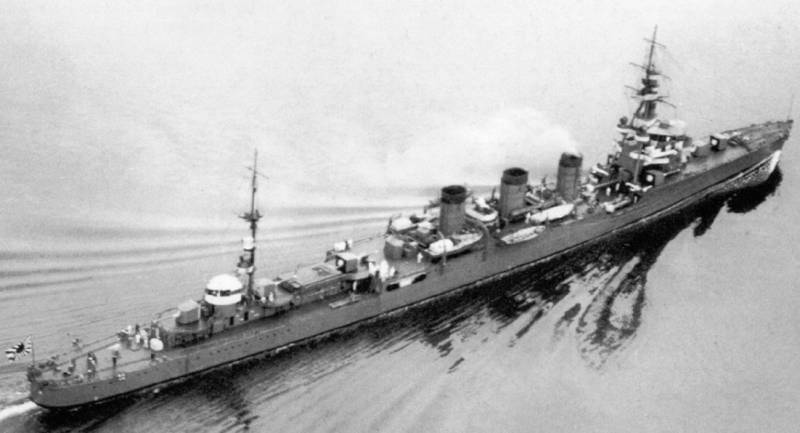
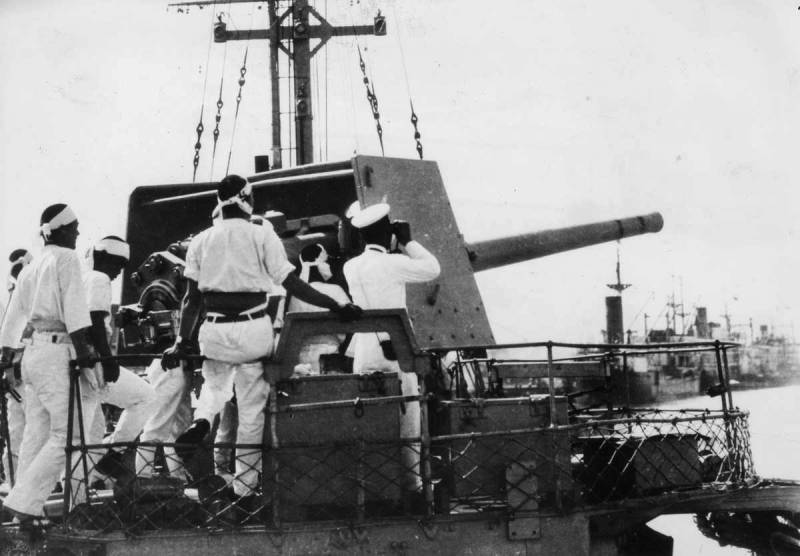
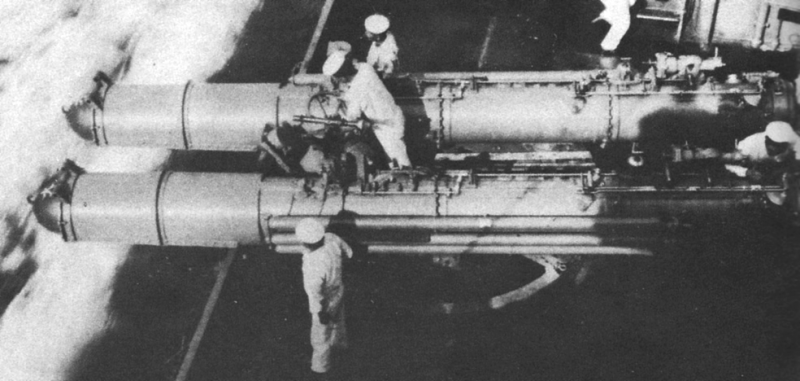
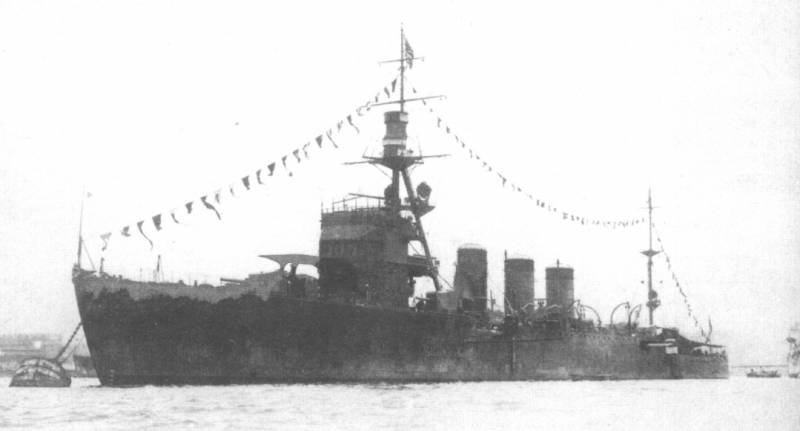
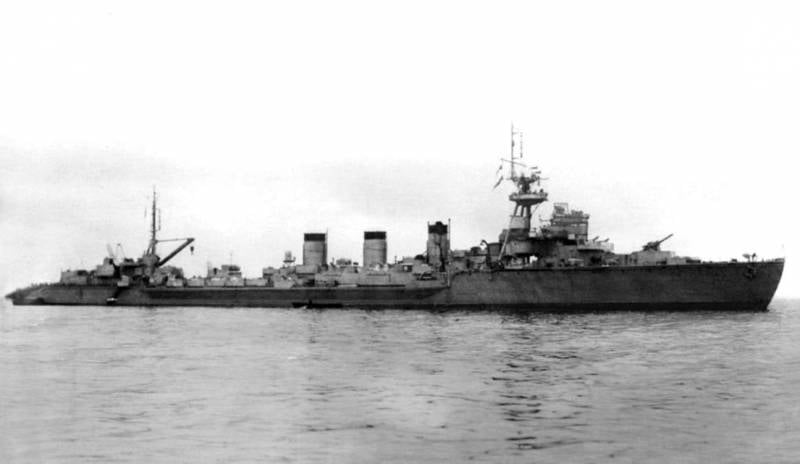
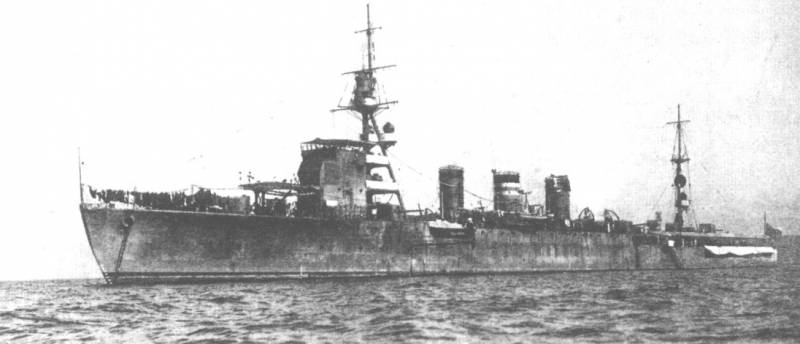
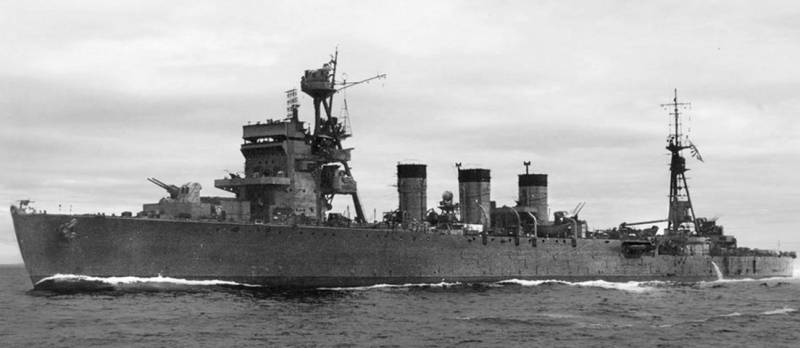
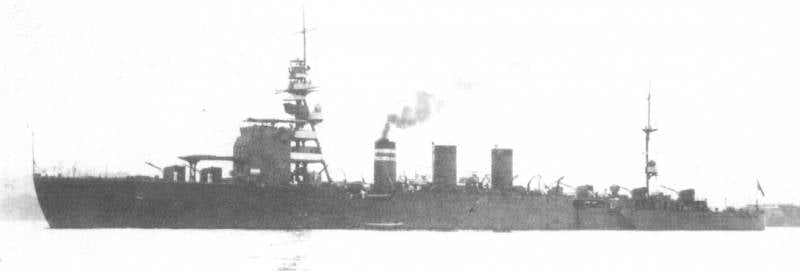
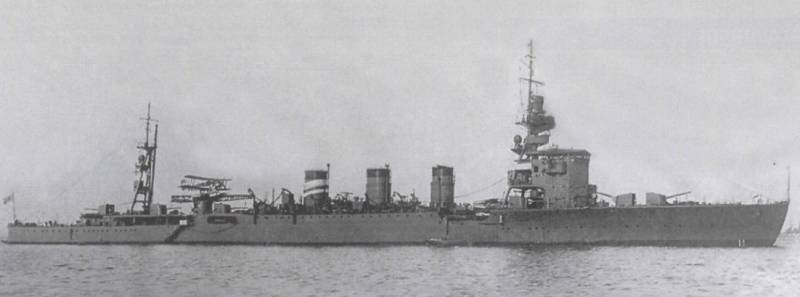
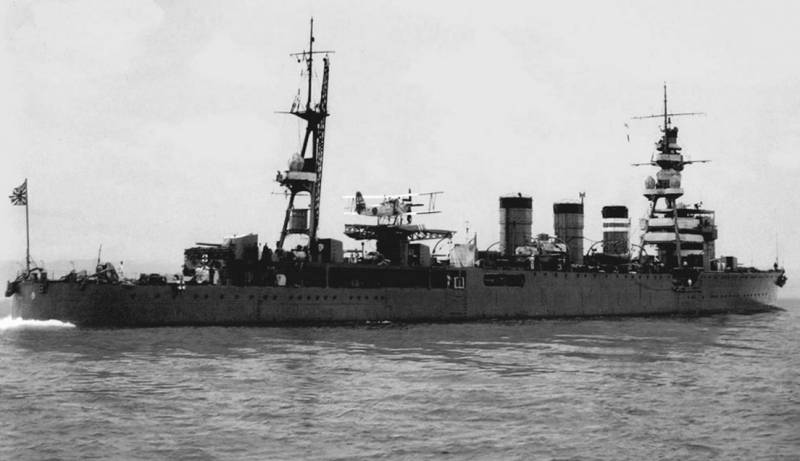
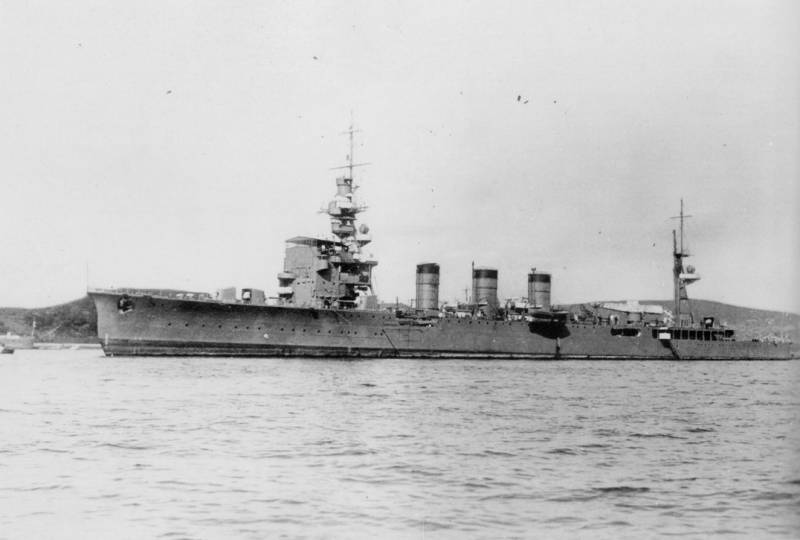
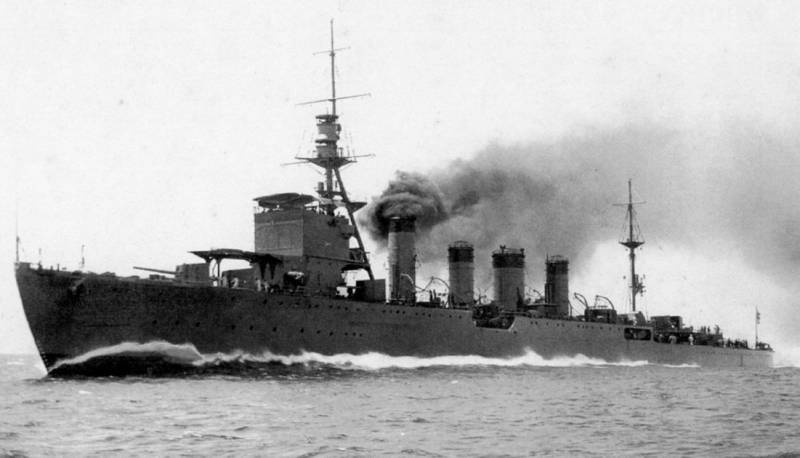
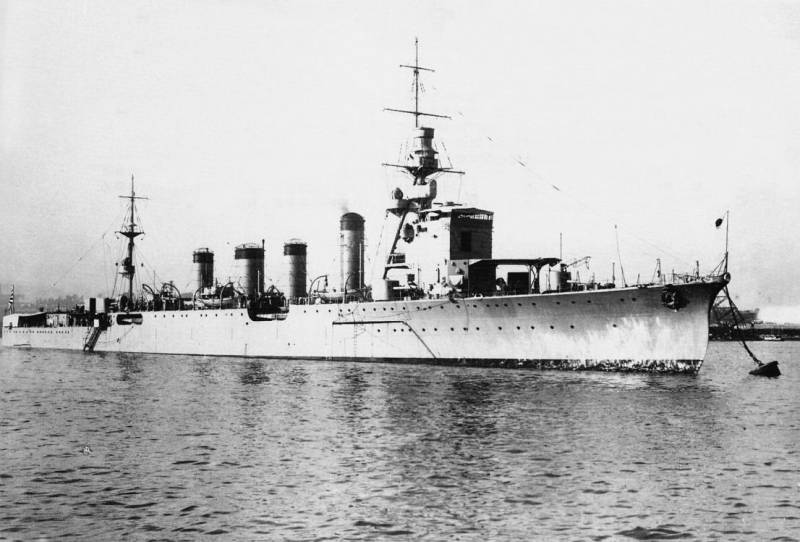
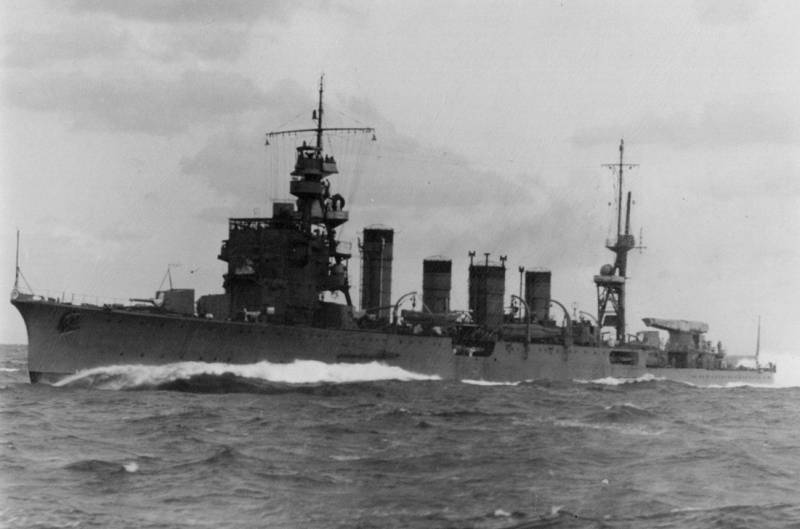
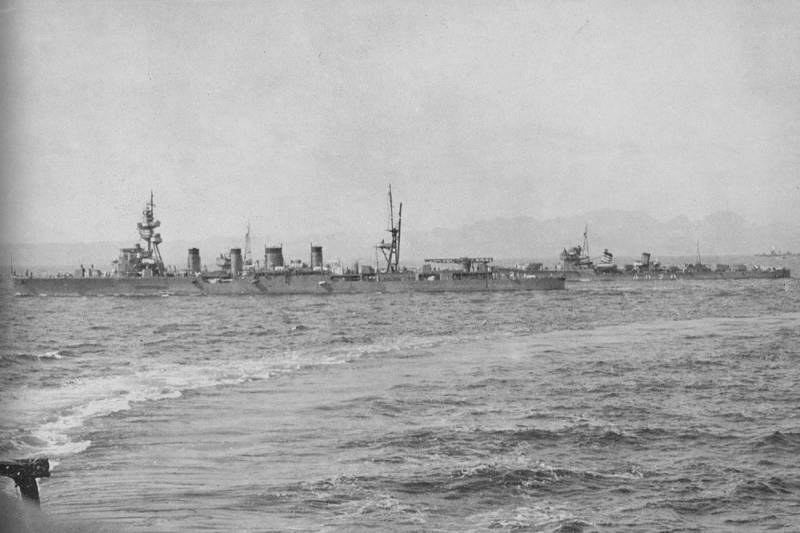
Information